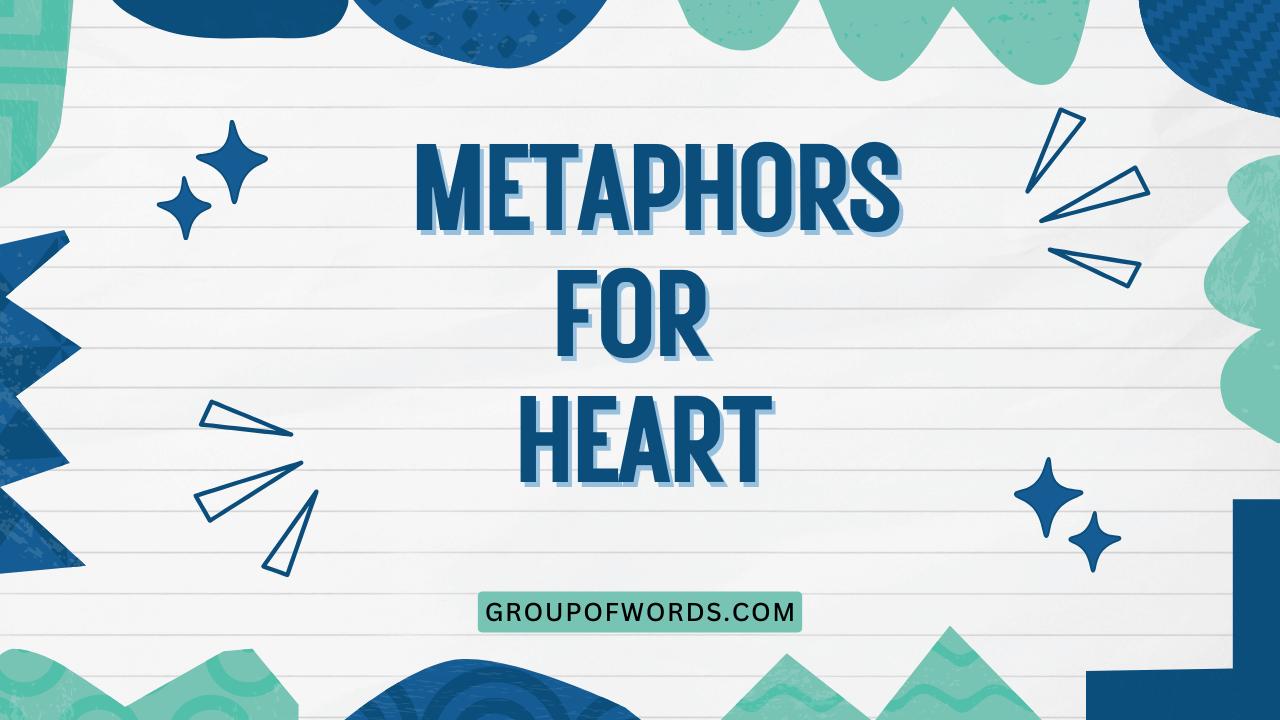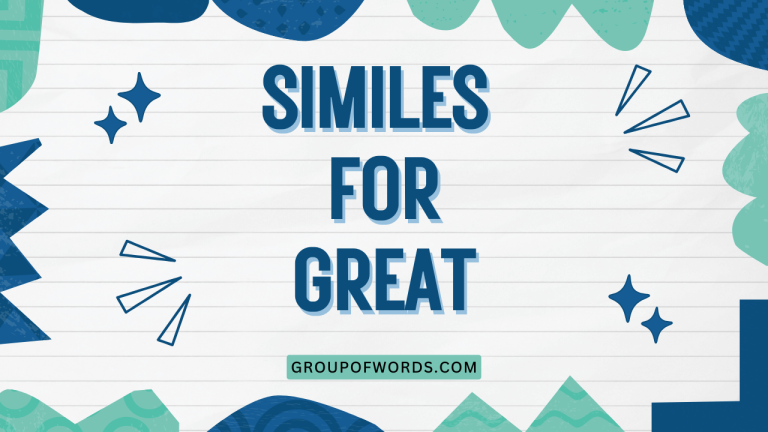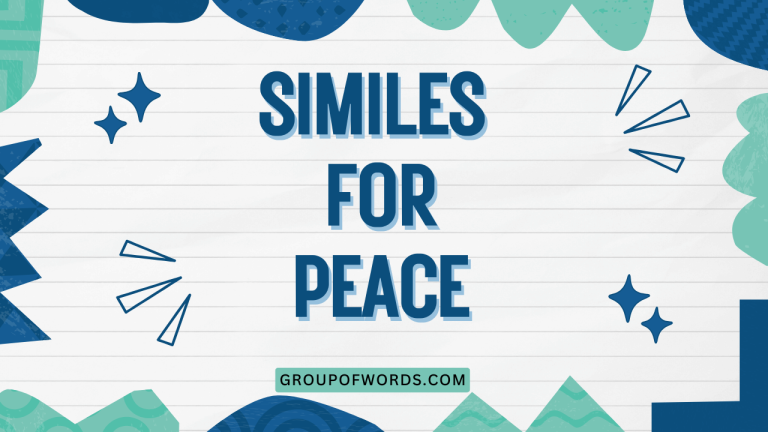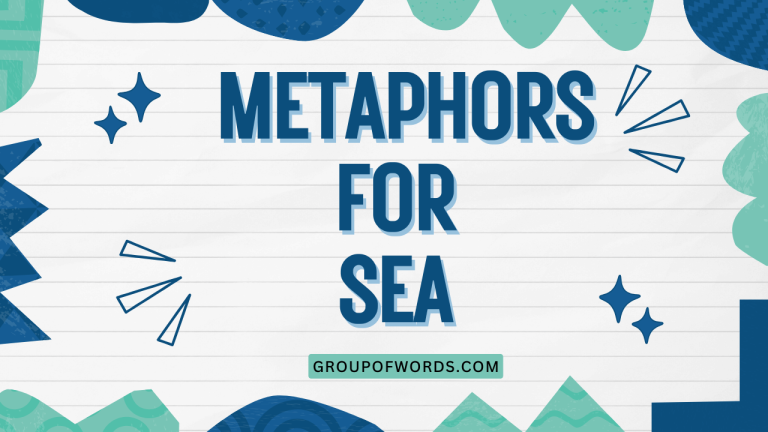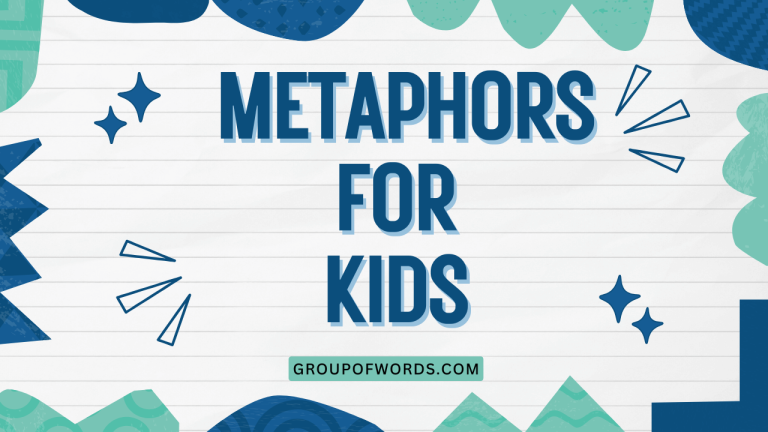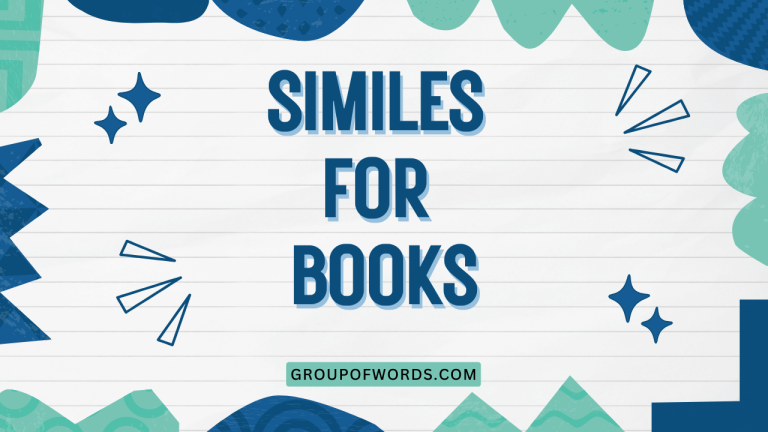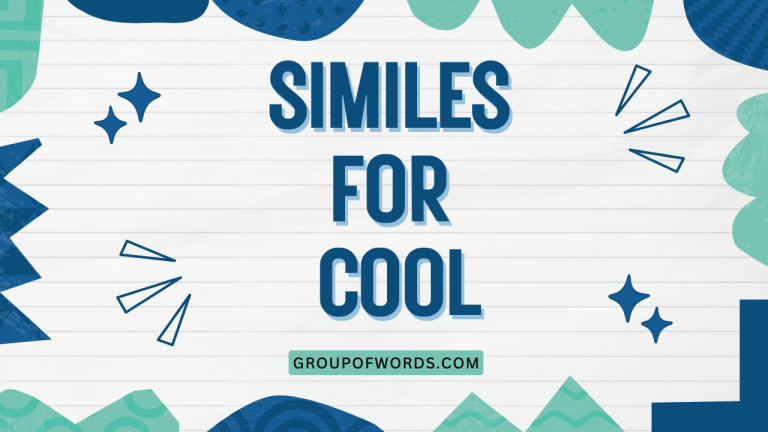Heart Metaphors: Exploring Figurative Language for Emotions
The human heart, a vital organ pumping life through our veins, has long served as a powerful symbol in language. Understanding heart metaphors is crucial for grasping nuanced expressions of emotion, love, courage, and even despair.
This article delves into the diverse world of heart metaphors, exploring their meanings, structures, and usage. Whether you’re an English language learner, a writer seeking vivid imagery, or simply curious about the richness of figurative language, this guide will provide you with a comprehensive understanding of how the heart is used metaphorically in English.
This guide benefits anyone looking to improve their English language skills, especially in understanding figurative language. It’s also useful for writers wanting to add depth and emotion to their writing and for those interested in the cultural significance of the heart as a symbol.
Table of Contents
- Definition of Heart Metaphors
- Structural Breakdown of Heart Metaphors
- Types and Categories of Heart Metaphors
- Examples of Heart Metaphors
- Usage Rules for Heart Metaphors
- Common Mistakes with Heart Metaphors
- Practice Exercises
- Advanced Topics in Heart Metaphors
- Frequently Asked Questions
- Conclusion
Definition of Heart Metaphors
A metaphor is a figure of speech that directly compares two unlike things without using “like” or “as.” A heart metaphor, therefore, uses the heart as a symbolic representation of abstract concepts such as love, emotion, courage, or compassion. These metaphors rely on the cultural associations and emotional weight we attach to the heart.
The heart, in metaphorical usage, transcends its biological function and becomes a powerful tool for expressing complex feelings and ideas.
Heart metaphors are pervasive in literature, poetry, music, and everyday speech. They allow us to convey deep emotional experiences in a vivid and relatable way.
By understanding the nuances of these metaphors, we can better appreciate the richness and depth of the English language. Consider the phrase “follow your heart.” This isn’t a literal instruction to chase after your circulatory system; it’s a metaphorical urging to pursue your deepest desires and intuitions.
Structural Breakdown of Heart Metaphors
Heart metaphors typically follow a basic structure: the heart (the subject) is described as or compared to something else (the object) that represents a particular quality or emotion. Understanding how these metaphors are constructed can help you interpret their meaning and create your own effective figurative language.
Here’s a breakdown of the structural elements:
- The Heart (Subject): The literal heart, or a reference to it (e.g., “my heart,” “her heart”).
- The Verb (Link): Often a verb of being (is, are, was, were) or a verb that implies a state of being (feels, seems, becomes).
- The Object (Metaphorical Representation): The word or phrase that represents the abstract quality or emotion. This could be a noun (e.g., a stone), an adjective (e.g., broken), or a phrase (e.g., on fire).
For example, in the metaphor “Her heart was a stone,” the heart (subject) is linked by the verb “was” to a stone (object), representing coldness or lack of emotion. The effectiveness of the metaphor lies in the reader’s understanding of the symbolic meaning of a stone in this context.
Types and Categories of Heart Metaphors
Heart metaphors can be broadly categorized based on the emotions or qualities they represent. Here are some common categories:
Heart as a Symbol of Love
The heart is perhaps most commonly associated with love. Metaphors in this category often depict the heart as being full, open, vulnerable, or even wounded by love.
These metaphors highlight the emotional intensity and transformative power of romantic or familial love.
Heart as a Seat of Emotion
Beyond love, the heart can represent a wide range of emotions, including joy, sorrow, anger, and fear. Metaphors in this category often describe the physical sensations associated with these emotions, such as a racing heart (fear, excitement) or a heavy heart (sadness).
Heart as a Source of Courage
The heart can also symbolize courage, bravery, and determination. Metaphors in this category often depict the heart as being strong, unwavering, or filled with fire.
These metaphors emphasize the inner strength needed to face challenges and overcome adversity.
Heart as a Symbol of Fragility
The heart can also represent vulnerability and fragility. Metaphors in this category often depict the heart as being easily broken, wounded, or fragile.
These metaphors highlight the emotional pain and vulnerability that can accompany love, loss, or betrayal.
Heart as a Source of Compassion
Finally, the heart can symbolize compassion, empathy, and kindness. Metaphors in this category often depict the heart as being open, generous, or filled with warmth.
These metaphors emphasize the importance of caring for others and showing empathy in the face of suffering.
Examples of Heart Metaphors
The following sections provide specific examples of heart metaphors, organized by category. These examples illustrate the diverse ways in which the heart can be used to represent different emotions and qualities.
Examples of Heart Metaphors for Love
This table illustrates how the heart is used metaphorically to represent different aspects of love, from joy and passion to longing and devotion. Each example shows the heart as a central symbol of affectionate connection and emotional resonance.
| Metaphor | Meaning |
|---|---|
| Her heart fluttered when she saw him. | She felt excited and nervous due to love. |
| His heart belonged to her. | He was deeply in love with her. |
| Their hearts were intertwined. | They shared a deep and inseparable love. |
| Love filled her heart to overflowing. | She was overwhelmed with love. |
| He wore his heart on his sleeve. | He openly displayed his feelings of love. |
| Her heart sang with joy. | She felt immense happiness because of love. |
| His heart ached for her. | He longed for her presence and love. |
| Their hearts beat as one. | They were perfectly in sync with each other. |
| She gave him her heart. | She offered him her love and devotion. |
| His heart skipped a beat. | He felt a sudden surge of excitement or surprise. |
| Her heart was full of love. | She had a deep capacity for love. |
| His heart melted when he saw her smile. | He was deeply touched and softened by her. |
| Their love was written in their hearts. | Their love was profound and permanent. |
| She held his heart gently in her hands. | She cherished and protected his love. |
| His heart soared when she said yes. | He felt elated and overjoyed. |
| Love bloomed in their hearts. | Their love grew and flourished. |
| Her heart was a garden of love. | Her heart was filled with beautiful and nurturing love. |
| His heart was captivated by her beauty. | He was completely enchanted by her. |
| Their hearts danced together. | They experienced a joyous and harmonious connection. |
| She unlocked his heart with her love. | She opened him up to experience love fully. |
| His heart yearned for her touch. | He deeply craved her physical affection. |
| Her heart whispered his name. | She thought of him fondly and lovingly. |
| Their hearts found solace in each other. | They provided comfort and support to one another. |
Examples of Heart Metaphors for Emotion
This table explores how the heart is used metaphorically to represent a broad spectrum of emotions beyond just love. From joy and excitement to sorrow and despair, these examples illustrate the heart as a central organ for experiencing and expressing human feelings.
| Metaphor | Meaning |
|---|---|
| His heart pounded with fear. | He felt extremely frightened. |
| Her heart sank when she heard the news. | She felt a sudden sense of disappointment or sadness. |
| He wore his heart on his sleeve. | He openly displayed his emotions. |
| Her heart leaped with joy. | She felt a sudden burst of happiness. |
| His heart ached with sadness. | He felt deep sorrow and grief. |
| Her heart was heavy with grief. | She felt burdened by sadness. |
| His heart was filled with anger. | He felt intense rage and resentment. |
| Her heart raced with excitement. | She felt thrilled and eager. |
| His heart fluttered with anticipation. | He felt nervous and excited about something. |
| Her heart felt like it would burst. | She felt overwhelmed with emotion. |
| His heart was a volcano of emotions. | He had a lot of intense and suppressed feelings. |
| Her heart was a storm of conflicting emotions. | She felt confused and overwhelmed by her feelings. |
| His heart was a wellspring of compassion. | He had a deep capacity for empathy and kindness. |
| Her heart was a battlefield of emotions. | She was struggling with conflicting feelings. |
| His heart was a fragile vessel of emotions. | He was emotionally vulnerable and easily hurt. |
| Her heart was a kaleidoscope of emotions. | She experienced a wide range of shifting emotions. |
| His heart was a pendulum swinging between hope and despair. | He felt alternating feelings of optimism and hopelessness. |
| Her heart was a pressure cooker of suppressed emotions. | She was holding back a lot of intense feelings. |
| His heart was a compass guiding him through his emotions. | He relied on his feelings to make decisions. |
| Her heart was a mirror reflecting her emotions. | Her feelings were clearly visible in her expressions. |
| His heart was a garden where emotions grew. | He nurtured and cultivated his feelings. |
| Her heart was an ocean of emotions, vast and deep. | She experienced profound and complex feelings. |
| His heart was a library filled with stories of emotions. | He had a rich and varied emotional history. |
| Her heart was a stage where emotions played out. | She expressed her feelings dramatically. |
Examples of Heart Metaphors for Courage
This table showcases how the heart is used metaphorically to represent courage, bravery, and resilience. These examples depict the heart as a source of inner strength and determination, enabling individuals to face challenges and overcome adversity with fortitude.
| Metaphor | Meaning |
|---|---|
| He had the heart of a lion. | He was very brave and courageous. |
| She showed great heart in the face of adversity. | She displayed courage and resilience during difficult times. |
| His heart didn’t waver despite the danger. | He remained steadfast and courageous. |
| She followed her heart, even when it was difficult. | She acted bravely according to her convictions. |
| He had a strong heart and faced his fears head-on. | He was brave and confronted his fears directly. |
| Her heart was filled with determination. | She was resolute and committed to her goals. |
| His heart was a fortress of courage. | He possessed unwavering bravery and strength. |
| She wore her heart like armor, ready to fight. | She faced challenges with bravery and determination. |
| His heart beat with the rhythm of courage. | He was naturally brave and fearless. |
| She drew strength from her heart. | She found courage and resilience within herself. |
| His heart was a fire, burning with courage. | He was passionate and fearless in his actions. |
| Her heart was an unyielding mountain of bravery. | She possessed immense and unwavering courage. |
| His heart was a warrior, ready for battle. | He was prepared to face any challenge with courage. |
| She carried courage in her heart like a shield. | She protected herself with bravery and resilience. |
| His heart was a beacon of hope and courage. | He inspired others with his bravery and optimism. |
| She planted seeds of courage in her heart. | She actively cultivated bravery and resilience. |
| His heart was a river flowing with unwavering courage. | He possessed a constant and unstoppable bravery. |
| She wrapped herself in the cloak of courage. | She embraced bravery as a source of strength. |
| His heart was a compass guiding him towards courage. | He always sought out and embraced bravery. |
| She painted her heart with the colors of courage. | She infused her life with bravery and boldness. |
| His heart was a star shining with unwavering courage. | He was a constant source of bravery and inspiration. |
| She built a fortress of courage in her heart. | She developed unshakeable bravery and resilience. |
| His heart was a drum beating the rhythm of courage. | He marched forward with unwavering bravery and determination. |
Examples of Heart Metaphors for Fragility
This table explores how the heart is used metaphorically to represent fragility, vulnerability, and emotional pain. These examples depict the heart as being easily broken or wounded, highlighting the delicate nature of emotions and relationships.
| Metaphor | Meaning |
|---|---|
| Her heart was easily broken. | She was emotionally vulnerable and easily hurt. |
| His heart shattered into a million pieces. | He experienced immense emotional pain. |
| Her heart was a fragile glass ornament. | She was delicate and easily damaged emotionally. |
| His heart was wounded by her words. | He was deeply hurt by what she said. |
| Her heart was a delicate flower, easily crushed. | She was emotionally fragile and easily overwhelmed. |
| His heart was a tender wound. | He was still feeling pain from a past hurt. |
| Her heart was a thin sheet of ice, ready to crack. | She was emotionally unstable and on the verge of breaking down. |
| His heart was a bird with a broken wing. | He was emotionally wounded and unable to fully heal. |
| Her heart was a fragile echo of what it once was. | She was emotionally diminished and weakened. |
| His heart was a delicate web, easily torn. | He was emotionally vulnerable and easily affected by others. |
| Her heart was a hollow shell. | She felt empty and emotionally detached. |
| His heart was a wilting flower. | He was losing hope and emotional vitality. |
| Her heart was a cracked vase, leaking love. | She was struggling to give and receive love fully. |
| His heart was a tattered flag, waving weakly. | He was emotionally exhausted and depleted. |
| Her heart was a flickering candle, about to go out. | She was losing her emotional strength and resilience. |
| His heart was a broken string on a violin. | He was unable to create beautiful music or experience joy. |
| Her heart was a faded photograph, losing its color. | She was losing her emotional vibrancy and memories. |
| His heart was a silent song, unable to be sung. | He was unable to express his emotions freely. |
| Her heart was a barren field, unable to grow. | She was unable to nurture new love or emotions. |
| His heart was a shattered mirror, reflecting only pain. | He was trapped in a cycle of emotional suffering. |
Examples of Heart Metaphors for Compassion
This table illustrates how the heart is used metaphorically to represent compassion, empathy, and kindness. These examples depict the heart as a source of warmth, generosity, and understanding, enabling individuals to connect with and care for others.
| Metaphor | Meaning |
|---|---|
| She had a heart of gold. | She was very kind and compassionate. |
| His heart went out to them. | He felt empathy and sympathy for them. |
| Her heart was filled with compassion for the suffering. | She felt deep sympathy and a desire to help those in need. |
| He had a generous heart and always helped others. | He was kind and always willing to assist others. |
| Her heart ached for the less fortunate. | She felt deep sorrow for those who were suffering. |
| His heart was open to everyone. | He was accepting and non-judgmental of others. |
| Her heart was a wellspring of kindness. | She had an endless capacity for compassion. |
| His heart was a beacon of hope for the downtrodden. | He provided comfort and support to those in need. |
| Her heart was a garden of empathy. | She nurtured and grew her capacity for understanding others. |
| His heart was a warm fire, offering comfort to the cold. | He provided solace and support to those who were suffering. |
| Her heart was a bridge connecting her to others’ pain. | She was able to understand and share the suffering of others. |
| His heart was a gentle hand, offering support and care. | He provided comfort and assistance to those in need. |
| Her heart was a safe harbor for those seeking refuge. | She offered a place of comfort and security to those who were struggling. |
| His heart was a healing balm for wounded souls. | He provided comfort and support to those who were emotionally hurt. |
| Her heart was a light shining in the darkness. | She brought hope and compassion to those who were suffering. |
| His heart was a melody of empathy, resonating with others’ pain. | He was able to understand and share the suffering of others. |
| Her heart was a tapestry woven with threads of compassion. | She embodied kindness and empathy in all aspects of her life. |
| His heart was a symphony of understanding, connecting him to humanity. | He was deeply connected to and understood the human experience. |
Examples of Heart Metaphors for Negative Emotions
This table presents heart metaphors that convey negative emotions such as bitterness, resentment, and coldness. These examples illustrate how the heart can be used to symbolize emotional states that are the opposite of love and compassion.
| Metaphor | Meaning |
|---|---|
| His heart was filled with bitterness. | He felt deep resentment and anger. |
| Her heart turned to ice. | She became cold and uncaring. |
| He had a heart of stone. | He was unfeeling and lacked empathy. |
| Her heart was consumed by jealousy. | She felt intense envy and resentment. |
| His heart was a dark and twisted place. | He harbored negative and destructive emotions. |
| Her heart was poisoned by hatred. | She was filled with animosity and ill will. |
| His heart was a cold and empty void. | He felt emotionally detached and devoid of feeling. |
| Her heart was a locked fortress, impenetrable to love. | She was unable to give or receive love. |
| His heart was a barren wasteland, devoid of warmth. | He lacked compassion and empathy. |
| Her heart was a frozen tundra, incapable of melting. | She was emotionally rigid and unyielding. |
| His heart was a venomous serpent, striking out at others. | He was malicious and caused harm to others. |
| Her heart was a black hole, sucking in all the light. | She drained the joy and happiness from others. |
| His heart was a stagnant pool, festering with resentment. | He harbored long-held grudges and bitterness. |
| Her heart was a thorny vine, choking the life out of joy. | She stifled happiness and positivity. |
| His heart was a lead weight, dragging him down. | He was burdened by negativity and despair. |
| Her heart was a shroud, suffocating any spark of hope. | She extinguished optimism and positivity. |
| His heart was a rusty cage, trapping his emotions. | He suppressed his feelings and became emotionally stunted. |
| Her heart was a shattered mirror, reflecting only ugliness. | She saw only negativity and flaws in herself and others. |
Usage Rules for Heart Metaphors
While heart metaphors offer creative flexibility, it’s important to use them judiciously and appropriately. Overuse can diminish their impact, while inappropriate usage can create confusion or even be unintentionally humorous.
- Consider the context: The meaning of a heart metaphor depends heavily on the context in which it is used. Ensure that the metaphor aligns with the overall tone and message of your writing or speech.
- Avoid clichés: Some heart metaphors, such as “heart of gold” or “broken heart,” have become clichés. While they are easily understood, they may lack originality and impact. Try to find fresh and creative ways to express your ideas.
- Be mindful of your audience: Consider your audience’s familiarity with heart metaphors. If you are writing for a younger audience or for non-native speakers, you may need to choose simpler and more direct metaphors.
- Maintain consistency: If you use a heart metaphor, maintain consistency throughout your writing. Avoid mixing metaphors or shifting the meaning of the heart in a way that is confusing or jarring.
- Ensure clarity: The primary goal of a metaphor is to enhance understanding. If your heart metaphor is too obscure or complex, it may fail to communicate your intended meaning.
Common Mistakes with Heart Metaphors
Even experienced writers can make mistakes when using heart metaphors. Here are some common errors to avoid:
- Mixing metaphors: Combining two or more incompatible metaphors can create a confusing and nonsensical image.
- Incorrect: “His heart was a roaring fire, but it sank like a stone.” (Mixing fire and sinking imagery)
- Correct: “His heart was a roaring fire.” or “His heart sank like a stone.”
- Overusing clichés: Relying too heavily on overused metaphors can make your writing sound unoriginal and predictable.
- Cliché: “She had a broken heart.”
- More Original: “Her heart felt like a shattered vase, its pieces scattered and irreparable.”
- Using metaphors that don’t fit the context: Choosing a metaphor that doesn’t align with the overall tone or message can create a jarring effect.
- Inappropriate: “He lost his job, and his heart danced with joy.” (Joy is inappropriate in this context)
- Appropriate: “He lost his job, and his heart sank with despair.”
- Being too literal: Sometimes, writers use language that is intended to be metaphorical, but it comes across as too literal and lacks impact.
- Too Literal: “His heart pumped blood faster when he was scared.”
- Metaphorical: “His heart hammered in his chest when he was scared.”
- Misinterpreting the meaning of a metaphor: It’s essential to understand the conventional meaning of a heart metaphor before using it.
- Incorrect Usage: “He wore his heart on his sleeve, trying to hide his feelings.” (Wearing your heart on your sleeve means openly displaying your feelings.)
- Correct Usage: “He wore his heart on his sleeve, openly displaying his feelings.”
Practice Exercises
Test your understanding of heart metaphors with these exercises:
Exercise 1: Identify the Meaning
Choose the best meaning for each heart metaphor:
| Question | Options | Answer |
|---|---|---|
| 1. Her heart was an open book. | a) She was secretive. b) She was easy to understand. c) She was complex. | b) She was easy to understand. |
| 2. He hardened his heart. | a) He became more compassionate. b) He became less emotional. c) He became more fearful. | b) He became less emotional. |
| 3. Their hearts were miles apart. | a) They were very close. b) They were incompatible. c) They were indifferent. | b) They were incompatible. |
| 4. She poured her heart out to him. | a) She shared her deepest feelings. b) She kept her feelings hidden. c) She expressed anger. | a) She shared her deepest feelings. |
| 5. His heart skipped a beat. | a) He felt sad. b) He felt calm. c) He felt surprised or excited. | c) He felt surprised or excited. |
| 6. Her heart was as light as a feather. | a) She felt burdened. b) She felt carefree and happy. c) She felt anxious. | b) She felt carefree and happy. |
| 7. He followed his heart. | a) He ignored his feelings. b) He pursued what he truly wanted. c) He acted impulsively. | b) He pursued what he truly wanted. |
| 8. Her heart was in her throat. | a) She felt relaxed. b) She felt nervous or anxious. c) She felt confident. | b) She felt nervous or anxious. |
| 9. He had a change of heart. | a) He remained unchanged. b) He changed his mind or feelings. c) He became more stubborn. | b) He changed his mind or feelings. |
| 10. Her heart went out to the refugees. | a) She felt indifferent. b) She felt empathy and sympathy. c) She felt anger. | b) She felt empathy and sympathy. |
Exercise 2: Fill in the Blanks
Complete the sentences with an appropriate heart metaphor:
| Question | Answer |
|---|---|
| 1. After the argument, her heart felt like a ____________. | …a heavy stone. |
| 2. Despite the setbacks, he refused to ____________. | …lose heart. |
| 3. Seeing her again made his ____________. | …heart soar. |
| 4. She knew she had to ____________ and tell him the truth. | …search her heart |
| 5. The news of the disaster ____________ her heart. | …weighed heavily on |
| 6. Even though they were apart, their ____________ remained connected. | …hearts |
| 7. He was so nervous that his ____________ was pounding in his chest. | …heart |
| 8. She wore her ____________ on her sleeve, openly showing her emotions. | …heart |
| 9. The music was so beautiful that it touched his ____________. | …heart |
| 10. Knowing he was safe brought peace to her ____________. | …heart |
Advanced Topics in Heart Metaphors
For advanced learners, consider exploring the following topics:
- Cultural Variations: Investigate how heart metaphors differ across cultures and languages. The symbolic meaning of the heart can vary significantly.
- Historical Evolution: Trace the historical development of heart metaphors in English literature and language.
- Psychological Impact: Explore the psychological effects of heart metaphors on emotions and perceptions.
- Creating Novel Metaphors: Experiment with creating your own original heart metaphors to express complex emotions and ideas.
Frequently Asked Questions
Here are some common questions about heart metaphors:
- What is the difference between a metaphor and a simile?
Both metaphors and similes compare two unlike things, but a metaphor directly equates them (e.g., “Her heart was a stone”), while a simile uses “like” or “as” to make the comparison (e.g., “Her heart was as cold
as a stone”).
- Why is the heart used so often as a symbol of emotion?
Historically, the heart was believed to be the center of emotions and intellect. While we now know that the brain controls these functions, the heart remains a powerful cultural symbol of feelings, particularly love, courage, and compassion.
- How can I avoid using clichés when writing heart metaphors?
To avoid clichés, try to think of unique and unexpected comparisons. Instead of saying “broken heart,” consider describing the specific sensations or experiences associated with heartbreak using original imagery.
- Are heart metaphors universal?
While the heart is a common symbol across many cultures, the specific associations and metaphors may vary. Researching cultural differences can help you avoid misunderstandings and appreciate the diversity of figurative language.
- How do I know if a heart metaphor is effective?
An effective heart metaphor should resonate with your audience, create a vivid image, and enhance understanding. If the metaphor is confusing, forced, or doesn’t add anything to your writing, it’s best to revise or remove it.
Conclusion
Heart metaphors are a powerful tool for expressing a wide range of emotions and ideas. By understanding the structure, types, and usage rules of these metaphors, you can enhance your understanding of the English language and improve your writing skills.
Whether you’re a student, a writer, or simply someone interested in language, mastering heart metaphors will enrich your ability to communicate effectively and creatively.
